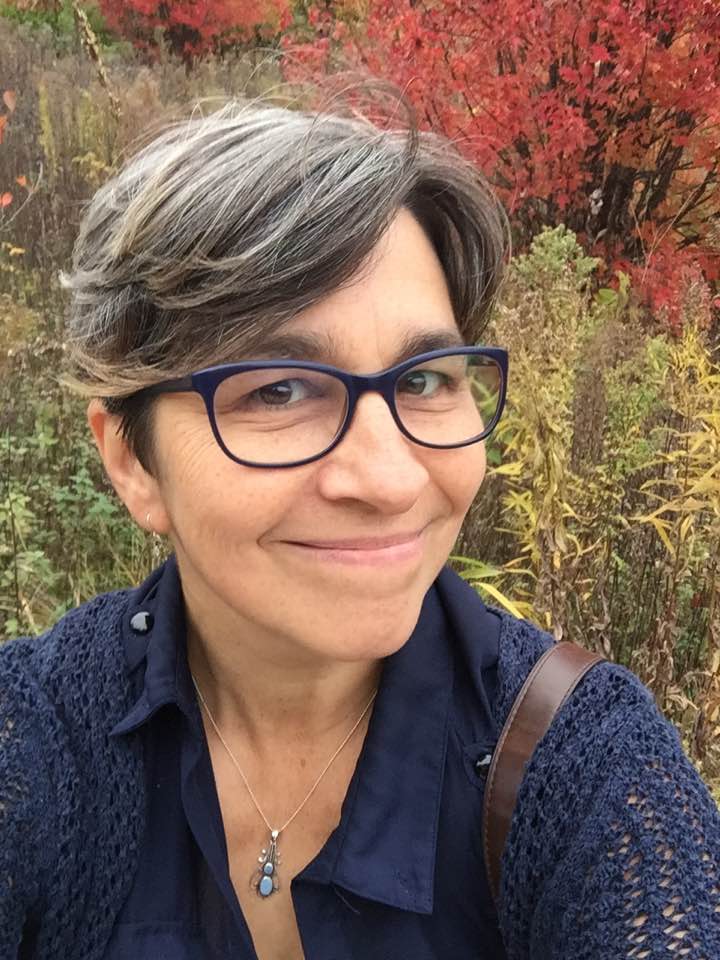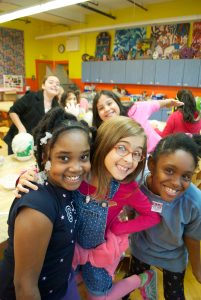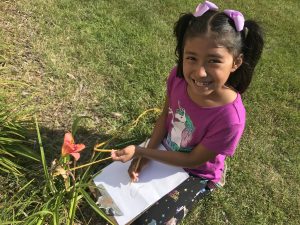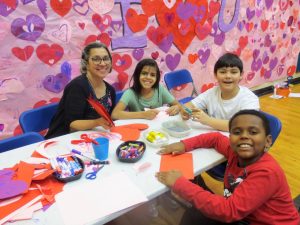
Sue has been an art teacher for the Milwaukee Public Schools for 22 years, primarily at La Escuela Fratney, a dual-language elementary school with a social justice curriculum. Sue’s teaching focuses on community collaborations, interdisciplinary study of culture, nature, and contemporary art practices. Previously, Sue worked as Education Coordinator for the Milwaukee Art Museum, managing their studio programs for children and adults.
Sue is a leader within the Art Educators’ Committee of the Milwaukee Teachers Education Association, advocating for the quality and equity of art programs within Milwaukee’s large urban district.
Sue earned degrees in Art History, Philosophy and K-12 Art Education from the University of Wisconsin-Milwaukee. Explore the content below to learn how she uses all of her personal, professional, artistic and academic experience to create an exquisitely tailored art program for her k-5 students at La Escuela Fratney.
This is an accordion element with a series of buttons that open and close related content panels.
Place-Based and Culture-Centered Art Education

Teaching Philosophy
In reflecting on her approach to art education, Sue said, “The place that my teaching philosophy begins is with relationships. Listening to each other. Smiling. Comforting. Building trust. When students come to art class, I want them to know that they are liked and cared for, that I will listen to them and help them. That they should listen to and help each other. Early in my teaching career, I took the importance of relationships for granted, and what I worried most about was producing art. Now, I trust that the art making experiences will be fine, and even better if the relationships in the art room are positive. Because of this, each class begins with community building and ends with conversation.
I have become accustomed to planning many lessons around “Big Ideas” or life-centered topics. Such topics are relevant to students of all ages and are interdisciplinary. Two examples are “all living things have needs” and “my family’s story is important”. A well chosen Big Idea allows students to explore, express and share issues of meaning and relevance.
As an elementary art specialist serving an entire school, it’s important to shape teaching practice around the characteristics, needs and assets found within the culture of that specific school community. Art can add so much value through the organizing of school-wide projects, family events, and bringing parents into our art classes to share their skills and cultural traditions.
I also believe that skill building is important and sometimes is the objective of a lesson. There is so much that young students don’t have access to or have understanding of, and it’s empowering for them to learn the secrets of printmaking, color mixing, sewing, creating ceramics and a whole host of other materials and techniques.”
Click on the videos below to hear more about Sue’s pedagogical models (which integrate with La Escuela Fratney’s four learning themes) and to see examples of the amazing works of art and collaborative installations her students have produced over the last few years.
- Place-based Education
- Multi-disciplinary projects with embedded skill building
- Culturally Responsive Teaching
- Anti-Racist/Anti-bias
Adventures in Virtual Learning

Check out Sue’s classroom blog and this presentation on Virtual Teaching to hear Sue share her adventures in shifting elementary art instruction to a distance learning environment, and be sure to click on the blue underlined hyperlinks for audio!
Art Advocacy and Colleague Support

Sue provides constant art advocacy and support for the arts in her school, in the Milwaukee Public School District, and in the city of Milwaukee itself. Review this Art Advocacy presentation to learn more (click on the blue underlined hyperlinks for audio).